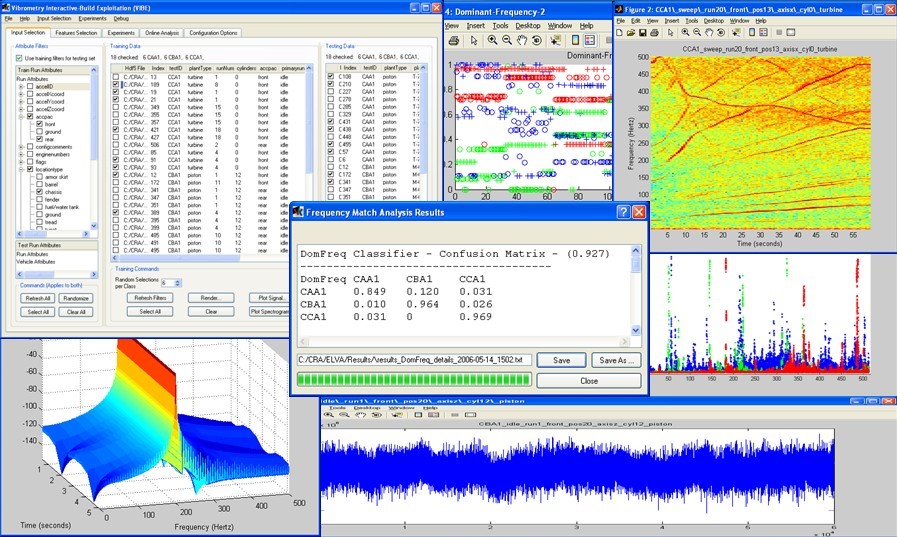VIBE
An interactive researcher’s workbench for
vibration-based sensor technology
Laser vibrometry (LV) and micro-laser interferometer Doppler (MLID) sensors measure minute vibrations on the surface of an object from large standoff distances. Charles River Analytics created a “researcher’s workbench” for the Air Force Research Laboratory (AFRL), to support research on these sensors and the creation of algorithms to enable their use for automatic target recognition (ATR).
The goal is to use an engine’s vibration signature to reliably identify a vehicle as a potential target. For instance, turbine engines produce a much different vibration signature than piston engines. Even when two different vehicles share an engine type, differences in vehicle size and construction make vibration signatures unique.
ATR using imaging sensors is extremely sensitive to the conditions under which the algorithms were developed and the field conditions under which the algorithms are used. For example, a target’s signature is influenced by the time of day, the time of year, the weather, the target geometry, and the sensor viewing angle.

Time of day, time of year, weather, target geometry, and viewing angle all affect a target’s signature.
Vector Intelligence Build Environment (VIBE)
VIBE is a robust, extensible software application for running targeted research experiments on large sets of vibrometry data.
The VIBE workbench has an integrated graphical user interface that enables the user to rapidly perform a wide range of experiments on test data with varying operating conditions similar to those produced by a fielded system. VIBE users can choose from a large set of frequency-domain feature extraction routines, or they can write their own in MATLAB, using our custom plug-in adapter.
- RELIEF-F, for automated feature selection to determine which features provide the best class separability
- The K-Means clustering algorithm, to decide how many unique classes are present.
- Naive Bayesian
- K-Nearest Neighbor
- Fuzzy-ARTMAP
- Frequency Match Analysis
- Throttle Signature Matching

VIBE workbench with representative data and classification result visualizations
Enhancing Sensor Effectiveness
VIBE gives researchers design of experiment capability. This enables the researcher to develop and refine, at low cost, algorithms that leverage vibration-based sensor technology. The VIBE system demonstrated a robust ability to identify vehicles and their components based on the unique vibration patterns of their engines. VIBE has helped AFRL to understand and improve their sensors and the algorithms that support the sensors. By supporting deep understanding of the underlying signals and their ability to discriminate among potential target vehicle classes, VIBE enhances the effectiveness of these sensors for future applications.
